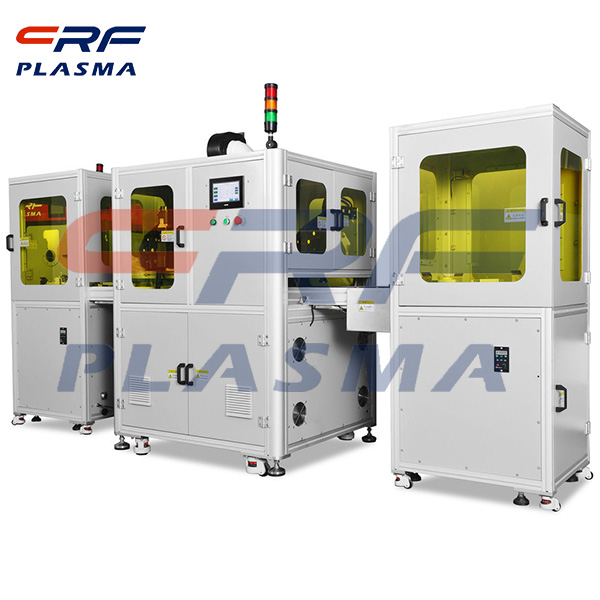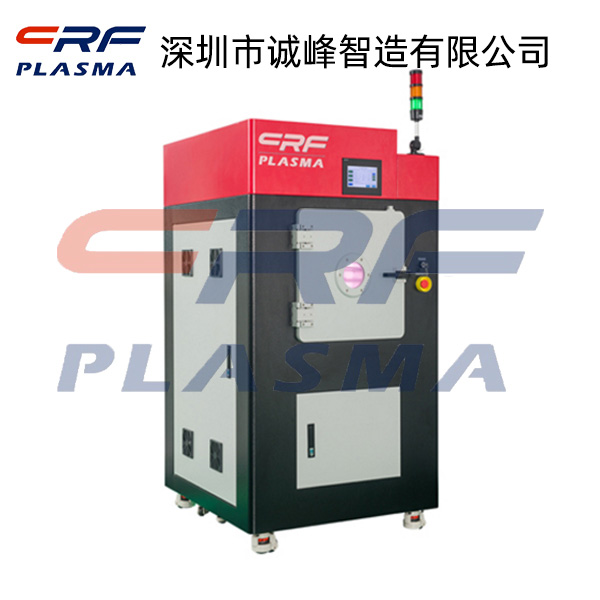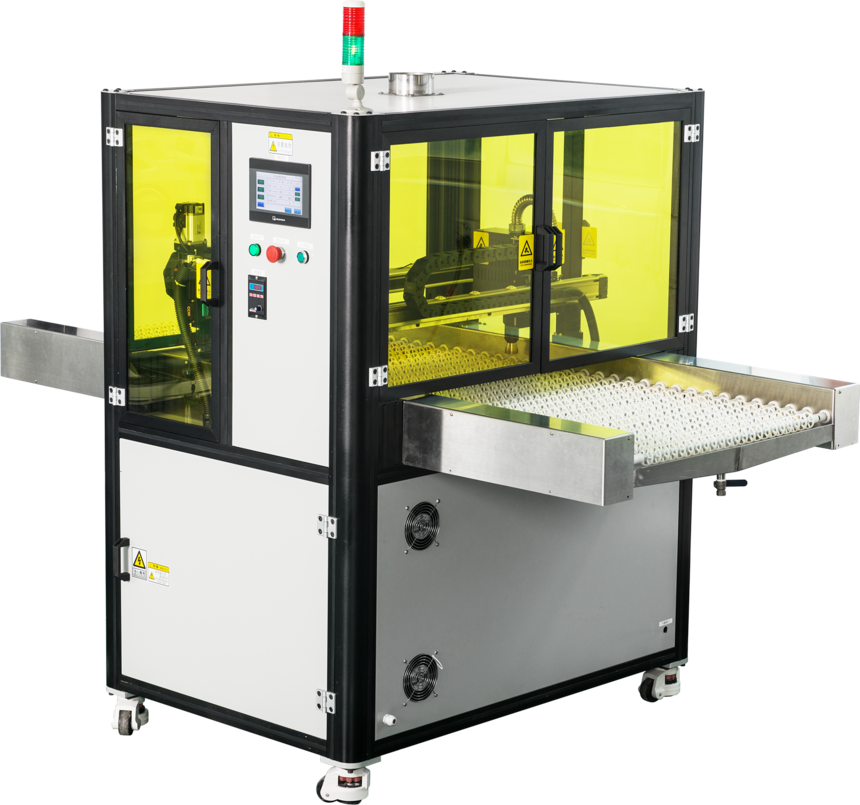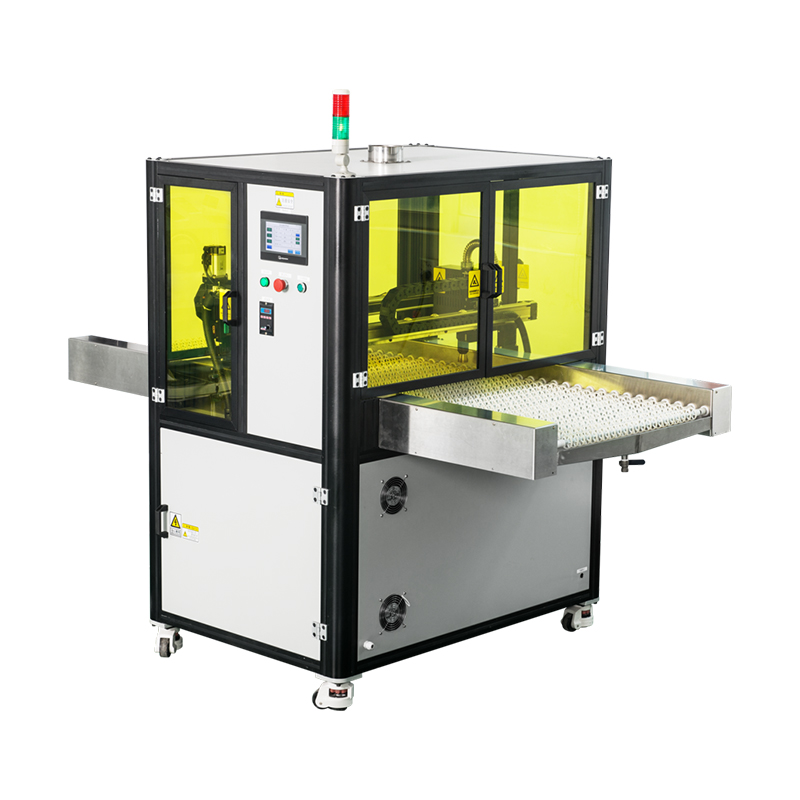
Welcome to Shenzhen Sing Fung Intelligent Manufacturing Co., Ltd.
E-mail:shaobo@sfi-crf.com
Oxygen Plasma Activation Mechanism Silicon-silicon Direct Bonding Process Research
- Categories:Industry News
- Author:plasma cleaning machine-surface treatment equipment-CRF plasma machine-Sing Fung Intelligent Manufacturing
- Origin:
- Time of issue:2021-06-15
- Views:
(Summary description)Oxygen plasma activation mechanism silicon-silicon direct bonding process research: As a packaging and manufacturing technology in the semiconductor manufacturing field, silicon direct bonding (SDB) is playing an increasingly important role. SDB bonding allows polished semiconductor wafers to be joined together without the use of adhesives. Oxygen plasma activation mechanism This technology can be widely used in many fields such as microelectronics, micromechanics, and optoelectronics. Therefore, in-depth study of this technology is of great significance for advancing the application of wafer bonding in the semiconductor industry. The current silicon wafer bonding technologies mainly include: anode bonding, interposer bonding, and direct bonding. Anode bonding requires that the silicon wafer to be bonded is connected to the positive electrode of the power supply, the glass is connected to the negative electrode, and the glass silicon wafer is heated to a certain temperature, so it cannot be used for direct silicon-silicon bonding. The interposer bonding uses an interposer to bond the two wafers. Among them, the intermediary is generally formed on the surface of the wafer to be bonded in advance through methods such as deposition and growth, and the two wafers are re-used to form a reliable connection during the bonding. The high annealing temperature required for the bonding of the interposer is prone to large thermal stress, and some undesirable chemical reactions occur, resulting in device damage or defects and pollution. The silicon-silicon direct bond has good compatibility at low temperature, rarely generates stress, and has good electrochemical properties, which has important research value. The silicon-silicon direct bond is closely related to its surface energy. Wet and dry activation techniques are usually used to increase the surface energy of silicon. Among them, dry methods such as oxygen plasma activation techniques have less pollution and can better improve the bonding quality. The influence of oxygen plasma activation process parameters on bonding. The activation process parameters include the effect of oxygen plasma activation time, activation power (ie RIE power) and oxygen flow rate on the bonding result, so as to optimize the activation process parameters in process applications select. The activation power plays a decisive role in the concentration and energy of the oxygen plasma, and has a huge contribution to changing the chemical characteristics of the flow of the silicon wafer surface, which is the focus of process research. Although the range value corresponding to the oxygen flow rate is smaller than the activation power, it also has an important effect on the oxygen plasma concentration. According to the process principle of activating the surface of silicon wafer by oxygen plasma, oxygen plasma oxidizes the surface of silicon wafer when treating the silicon wafer to improve hydrophilicity and generate a large number of hydroxyl groups, which plays a vital role in bonding.
Oxygen Plasma Activation Mechanism Silicon-silicon Direct Bonding Process Research
(Summary description)Oxygen plasma activation mechanism silicon-silicon direct bonding process research:
As a packaging and manufacturing technology in the semiconductor manufacturing field, silicon direct bonding (SDB) is playing an increasingly important role. SDB bonding allows polished semiconductor wafers to be joined together without the use of adhesives.
Oxygen plasma activation mechanism
This technology can be widely used in many fields such as microelectronics, micromechanics, and optoelectronics. Therefore, in-depth study of this technology is of great significance for advancing the application of wafer bonding in the semiconductor industry.
The current silicon wafer bonding technologies mainly include: anode bonding, interposer bonding, and direct bonding. Anode bonding requires that the silicon wafer to be bonded is connected to the positive electrode of the power supply, the glass is connected to the negative electrode, and the glass silicon wafer is heated to a certain temperature, so it cannot be used for direct silicon-silicon bonding. The interposer bonding uses an interposer to bond the two wafers.
Among them, the intermediary is generally formed on the surface of the wafer to be bonded in advance through methods such as deposition and growth, and the two wafers are re-used to form a reliable connection during the bonding. The high annealing temperature required for the bonding of the interposer is prone to large thermal stress, and some undesirable chemical reactions occur, resulting in device damage or defects and pollution.
The silicon-silicon direct bond has good compatibility at low temperature, rarely generates stress, and has good electrochemical properties, which has important research value. The silicon-silicon direct bond is closely related to its surface energy. Wet and dry activation techniques are usually used to increase the surface energy of silicon. Among them, dry methods such as oxygen plasma activation techniques have less pollution and can better improve the bonding quality.
The influence of oxygen plasma activation process parameters on bonding. The activation process parameters include the effect of oxygen plasma activation time, activation power (ie RIE power) and oxygen flow rate on the bonding result, so as to optimize the activation process parameters in process applications select.
The activation power plays a decisive role in the concentration and energy of the oxygen plasma, and has a huge contribution to changing the chemical characteristics of the flow of the silicon wafer surface, which is the focus of process research.
Although the range value corresponding to the oxygen flow rate is smaller than the activation power, it also has an important effect on the oxygen plasma concentration. According to the process principle of activating the surface of silicon wafer by oxygen plasma, oxygen plasma oxidizes the surface of silicon wafer when treating the silicon wafer to improve hydrophilicity and generate a large number of hydroxyl groups, which plays a vital role in bonding.
- Categories:Industry News
- Author:plasma cleaning machine-surface treatment equipment-CRF plasma machine-Sing Fung Intelligent Manufacturing
- Origin:
- Time of issue:2021-06-15 17:28
- Views:
Oxygen plasma activation mechanism silicon-silicon direct bonding process research:
As a packaging and manufacturing technology in the semiconductor manufacturing field, silicon direct bonding (SDB) is playing an increasingly important role. SDB bonding allows polished semiconductor wafers to be joined together without the use of adhesives.

Oxygen plasma activation mechanism
This technology can be widely used in many fields such as microelectronics, micromechanics, and optoelectronics. Therefore, in-depth study of this technology is of great significance for advancing the application of wafer bonding in the semiconductor industry.
The current silicon wafer bonding technologies mainly include: anode bonding, interposer bonding, and direct bonding. Anode bonding requires that the silicon wafer to be bonded is connected to the positive electrode of the power supply, the glass is connected to the negative electrode, and the glass silicon wafer is heated to a certain temperature, so it cannot be used for direct silicon-silicon bonding. The interposer bonding uses an interposer to bond the two wafers.
Among them, the intermediary is generally formed on the surface of the wafer to be bonded in advance through methods such as deposition and growth, and the two wafers are re-used to form a reliable connection during the bonding. The high annealing temperature required for the bonding of the interposer is prone to large thermal stress, and some undesirable chemical reactions occur, resulting in device damage or defects and pollution.
The silicon-silicon direct bond has good compatibility at low temperature, rarely generates stress, and has good electrochemical properties, which has important research value. The silicon-silicon direct bond is closely related to its surface energy. Wet and dry activation techniques are usually used to increase the surface energy of silicon. Among them, dry methods such as oxygen plasma activation techniques have less pollution and can better improve the bonding quality.
The influence of oxygen plasma activation process parameters on bonding. The activation process parameters include the effect of oxygen plasma activation time, activation power (ie RIE power) and oxygen flow rate on the bonding result, so as to optimize the activation process parameters in process applications select.
The activation power plays a decisive role in the concentration and energy of the oxygen plasma, and has a huge contribution to changing the chemical characteristics of the flow of the silicon wafer surface, which is the focus of process research.
Although the range value corresponding to the oxygen flow rate is smaller than the activation power, it also has an important effect on the oxygen plasma concentration. According to the process principle of activating the surface of silicon wafer by oxygen plasma, oxygen plasma oxidizes the surface of silicon wafer when treating the silicon wafer to improve hydrophilicity and generate a large number of hydroxyl groups, which plays a vital role in bonding.
Scan the QR code to read on your phone

TEL:0755-3367 3020 / 0755-3367 3019

E-mail:sales-sfi@sfi-crf.com

ADD:Mabao Industrial Zone, Huangpu, Baoan District, Shenzhen














